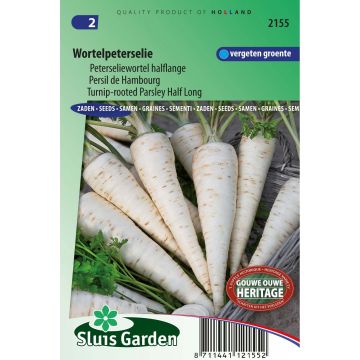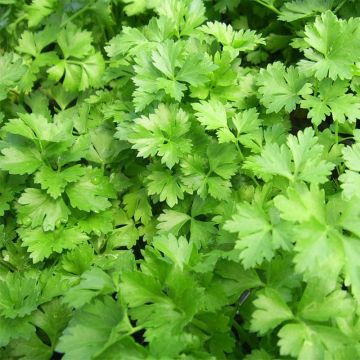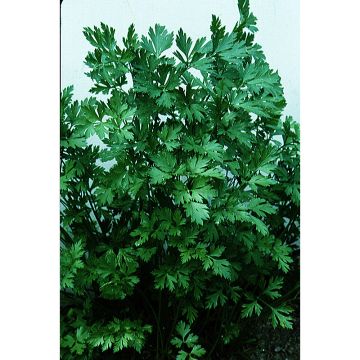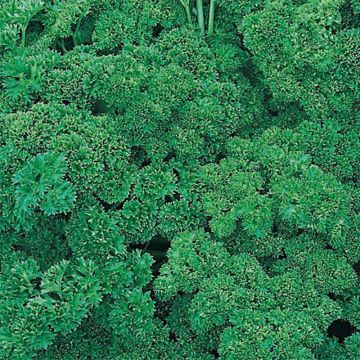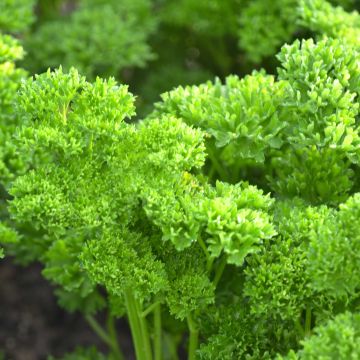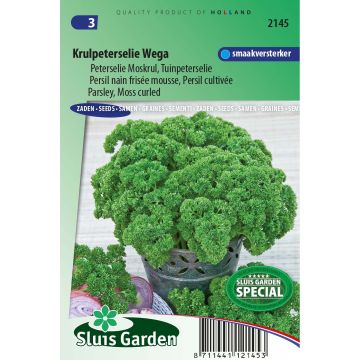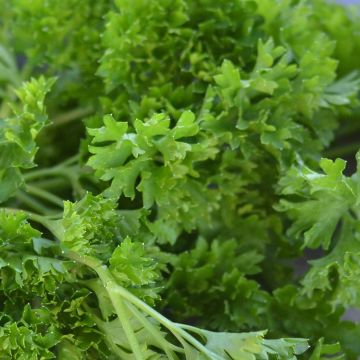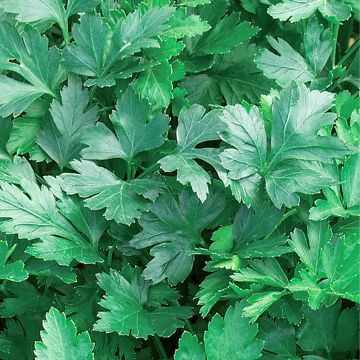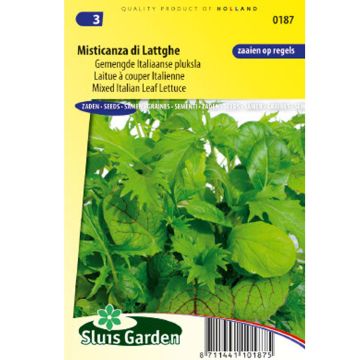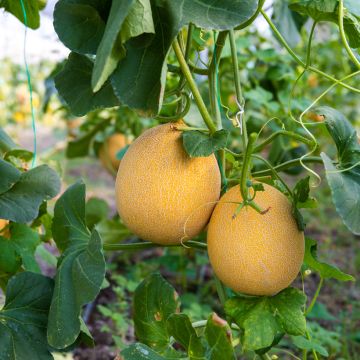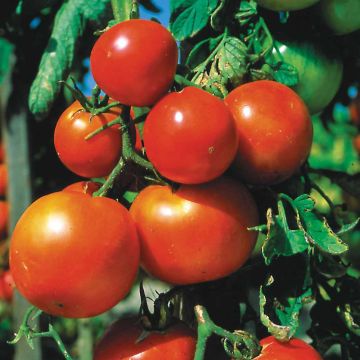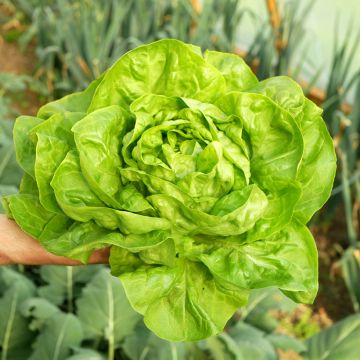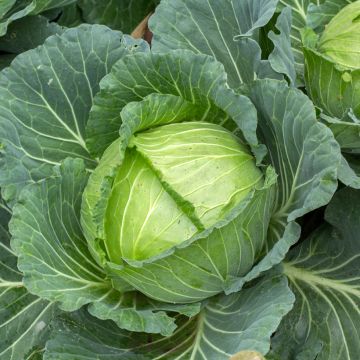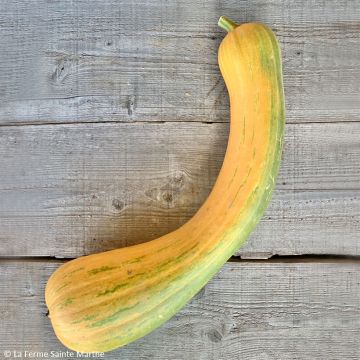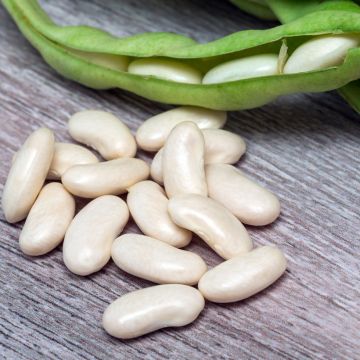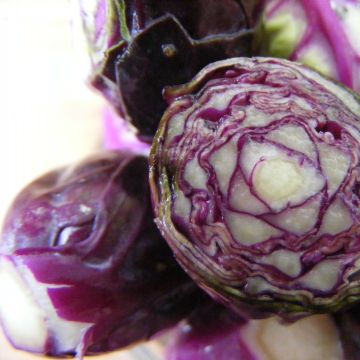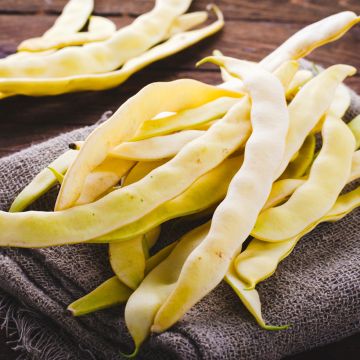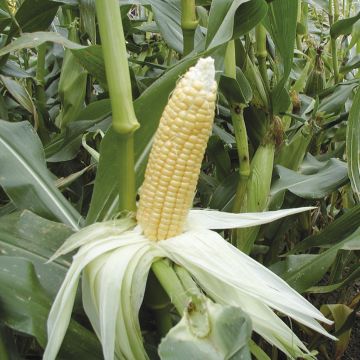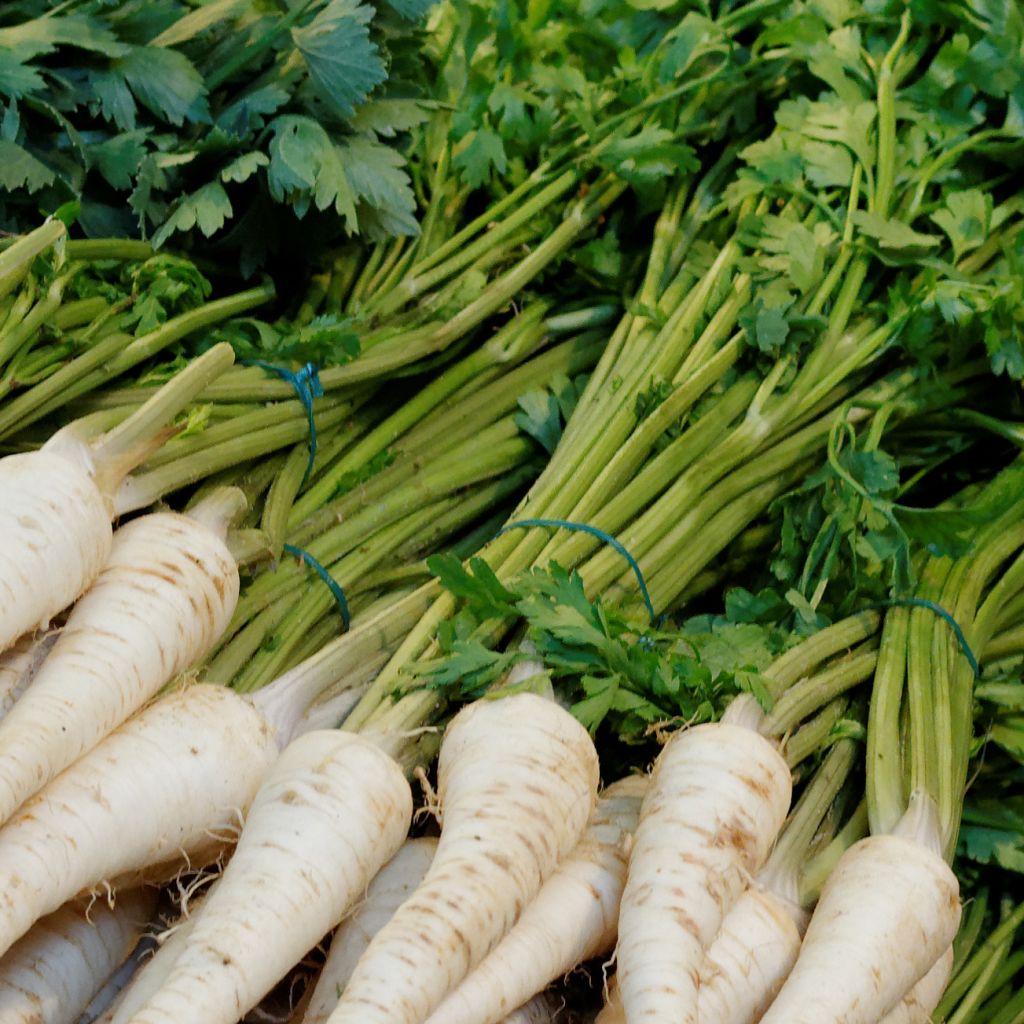

Hamburg Parsley Pietruzska - Turnip-rooted Parsley
Hamburg Parsley Pietruzska - Turnip-rooted Parsley
Petroselinum crispum tuberosum
Garden Parsley, French Parsley
No comments for a seed packet
Chantal MAYMARD, 30/04/2016
This plant carries a 6 months recovery warranty
More information
We guarantee the quality of our plants for a full growing cycle, and will replace at our expense any plant that fails to recover under normal climatic and planting conditions.
Seed-only orders are dispatched by sealed envelope. The delivery charge for seed-only orders is €3.90.
Description
'Pietruzska' Hamburg Parsley or Turnip-rooted parsley is an original, rare variety that is grown for its large, 15 cm long white parsnip-like taproot. Its leaves are less fragrant than Italian parsley or French parsley. Its root has a delicious nutty flavour. It can be eaten raw or cooked like carrots and parsnips. It is very tasty steamed, mashed or roasted. Sow from March to May and harvest from April to October.
Parsley is a biennial aromatic plant, generally grown as an annual, native to the Mediterranean region. It belongs to the Apiaceae family and is widely used as a fresh culinary herb. There are two main types of parsley: Italian flat parsley which is considered to have a more robust flavour, and curly French parsley which is usually used as a garnish. Less common is Hamburg parsley, grown for its thick, parsnip-like taproots.
During its second year, parsley produces umbels of tiny yellowish-green to white flowers. The flower heads then develop seeds which can be harvested and dried for sowing the following year.
Parsley is very rich in vitamins A and C, trace elements and minerals. Parsley leaves can be eaten raw to flavour or garnish salads, or cooked in omelettes, soups and sauces. Save the stems for making bouquet garni, a French classic herb mixture used for flavouring casseroles, stews, stocks etc. that also includes thyme, rosemary and laurel leaves.
Harvesting: Parsley leaves can be picked all year round, simply snip the outer leaves off with scissors as and when required. Regular harvesting will encourage new leaf production.
Storage: Parsley has a fuller, richer aroma when eaten fresh. Nevertheless, the leaves can be frozen or dried for later use. To dry, hang in bunches upside down in a warm, well-ventilated room.
Good to know: Mulching with grass clippings or dead leaves is recommended, especially during hot dry spells, as this will help keep the soil moist whilst limiting weed growth.
Report an error about the product description
Harvest
Plant habit
Foliage
Botanical data
Petroselinum
crispum
tuberosum
Apiaceae
Garden Parsley, French Parsley
Cultivar or hybrid
Biennial
Other Parsley seeds
Planting and care
Seedlings
Care
Intended location
-
, onOrder confirmed
Reply from on Promesse de fleurs
Vegetable seeds
Haven't found what you were looking for?
Hardiness is the lowest winter temperature a plant can endure without suffering serious damage or even dying. However, hardiness is affected by location (a sheltered area, such as a patio), protection (winter cover) and soil type (hardiness is improved by well-drained soil).

Photo Sharing Terms & Conditions
In order to encourage gardeners to interact and share their experiences, Promesse de fleurs offers various media enabling content to be uploaded onto its Site - in particular via the ‘Photo sharing’ module.
The User agrees to refrain from:
- Posting any content that is illegal, prejudicial, insulting, racist, inciteful to hatred, revisionist, contrary to public decency, that infringes on privacy or on the privacy rights of third parties, in particular the publicity rights of persons and goods, intellectual property rights, or the right to privacy.
- Submitting content on behalf of a third party;
- Impersonate the identity of a third party and/or publish any personal information about a third party;
In general, the User undertakes to refrain from any unethical behaviour.
All Content (in particular text, comments, files, images, photos, videos, creative works, etc.), which may be subject to property or intellectual property rights, image or other private rights, shall remain the property of the User, subject to the limited rights granted by the terms of the licence granted by Promesse de fleurs as stated below. Users are at liberty to publish or not to publish such Content on the Site, notably via the ‘Photo Sharing’ facility, and accept that this Content shall be made public and freely accessible, notably on the Internet.
Users further acknowledge, undertake to have ,and guarantee that they hold all necessary rights and permissions to publish such material on the Site, in particular with regard to the legislation in force pertaining to any privacy, property, intellectual property, image, or contractual rights, or rights of any other nature. By publishing such Content on the Site, Users acknowledge accepting full liability as publishers of the Content within the meaning of the law, and grant Promesse de fleurs, free of charge, an inclusive, worldwide licence for the said Content for the entire duration of its publication, including all reproduction, representation, up/downloading, displaying, performing, transmission, and storage rights.
Users also grant permission for their name to be linked to the Content and accept that this link may not always be made available.
By engaging in posting material, Users consent to their Content becoming automatically accessible on the Internet, in particular on other sites and/or blogs and/or web pages of the Promesse de fleurs site, including in particular social pages and the Promesse de fleurs catalogue.
Users may secure the removal of entrusted content free of charge by issuing a simple request via our contact form.
The flowering period indicated on our website applies to countries and regions located in USDA zone 8 (France, the United Kingdom, Ireland, the Netherlands, etc.)
It will vary according to where you live:
- In zones 9 to 10 (Italy, Spain, Greece, etc.), flowering will occur about 2 to 4 weeks earlier.
- In zones 6 to 7 (Germany, Poland, Slovenia, and lower mountainous regions), flowering will be delayed by 2 to 3 weeks.
- In zone 5 (Central Europe, Scandinavia), blooming will be delayed by 3 to 5 weeks.
In temperate climates, pruning of spring-flowering shrubs (forsythia, spireas, etc.) should be done just after flowering.
Pruning of summer-flowering shrubs (Indian Lilac, Perovskia, etc.) can be done in winter or spring.
In cold regions as well as with frost-sensitive plants, avoid pruning too early when severe frosts may still occur.
The planting period indicated on our website applies to countries and regions located in USDA zone 8 (France, United Kingdom, Ireland, Netherlands).
It will vary according to where you live:
- In Mediterranean zones (Marseille, Madrid, Milan, etc.), autumn and winter are the best planting periods.
- In continental zones (Strasbourg, Munich, Vienna, etc.), delay planting by 2 to 3 weeks in spring and bring it forward by 2 to 4 weeks in autumn.
- In mountainous regions (the Alps, Pyrenees, Carpathians, etc.), it is best to plant in late spring (May-June) or late summer (August-September).
The harvesting period indicated on our website applies to countries and regions in USDA zone 8 (France, England, Ireland, the Netherlands).
In colder areas (Scandinavia, Poland, Austria...) fruit and vegetable harvests are likely to be delayed by 3-4 weeks.
In warmer areas (Italy, Spain, Greece, etc.), harvesting will probably take place earlier, depending on weather conditions.
The sowing periods indicated on our website apply to countries and regions within USDA Zone 8 (France, UK, Ireland, Netherlands).
In colder areas (Scandinavia, Poland, Austria...), delay any outdoor sowing by 3-4 weeks, or sow under glass.
In warmer climes (Italy, Spain, Greece, etc.), bring outdoor sowing forward by a few weeks.

































